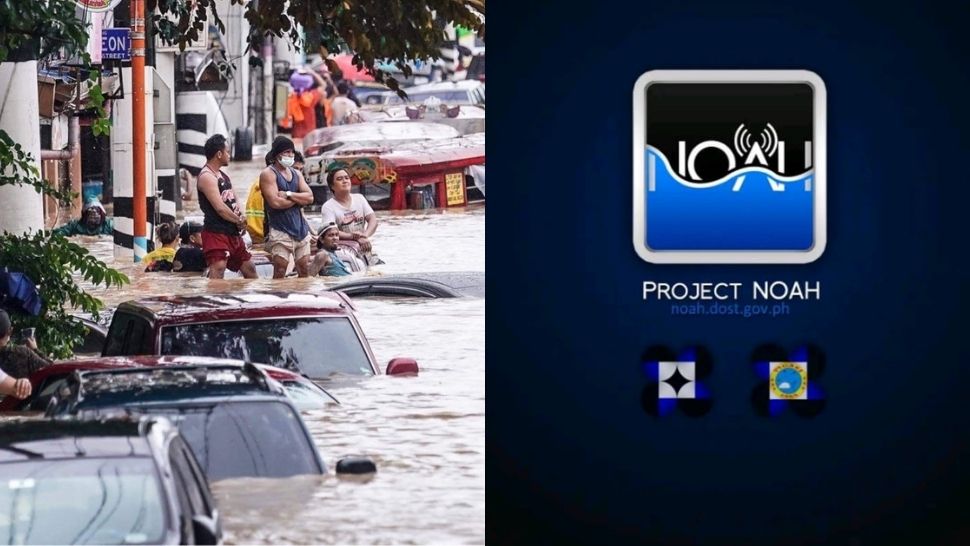A family gathers in a gymnasium filled with flowers, balloons, and banners. Their daughter is graduating from college—the first in their family. Tears flow as she marches across the stage, holding her diploma high. For her parents, that piece of paper represents years of sacrifice: selling land, borrowing money, working extra hours.
Everyone believes the diploma is the ticket to a better life.
But six months later, reality hits hard. The daughter is still at home, sending résumés, waiting for callbacks that rarely come. The family begins to whisper, “Didn’t we do everything right? Why hasn’t the diploma opened the door?”
This is the heartbreak many Filipino families face. The promise of the diploma—that it guarantees a job, a career, a future—is breaking. And it’s breaking the confidence of students, the finances of families, and the faith of communities.
Diploma ≠ Deployment.
The Reality in the Philippines
In the Philippines today, graduating from college does not always mean getting a job. In fact, the numbers show how wide the gap really is.
Recent reports say that more than one-third of unemployed Filipinos are college graduates. Imagine that: students who studied for four years or more, yet still can’t find work. Even among those employed, many end up in jobs that don’t match their degree. One study showed that 76% of science and technology graduates are working outside their field.
And the funnel is even narrower than most people realize. Out of 100 children who start Grade 1, only about 40 will make it to college. Out of those, only 25 will graduate. And from those 25, fewer than 20 will end up with jobs aligned to their degree. The rest fall through the cracks—dropping out, unemployed, or underemployed.
Behind those numbers are real lives. I once met Juan, who graduated with a degree in Information Technology. His family expected him to be part of a software team. But months later, the only job he found was clerical work. He said to me, “Sir, I’m using a computer, but not what I studied.”
This is the reality. The diploma is still a proud achievement—but it is no longer a guarantee.
Why the Old Promise No Longer Works
There was a time when finishing college almost guaranteed a good job. Employers looked at your diploma and said, “You’re hired.” That was the old promise. But the world has changed, and the promise has broken.
First, the economy is moving faster than the classroom. New jobs appear every year—digital marketing, data analytics, app development, renewable energy. But many schools still teach using the same books from ten or twenty years ago. By the time students graduate, the skills they learned are already outdated.
Second, employers are looking for more than grades. They want people who can think on their feet, solve problems, and work well with others. Yet too many graduates have been trained to memorize answers, not create solutions. I once spoke with an HR manager who sighed, “Our new hires know the theories, but they freeze when faced with real-world problems.”
Third, technology has outpaced the curriculum. A graduate with an IT degree told me he never learned cloud computing in school. But on his first job interview, that was the very first question. He failed, not because he lacked intelligence, but because his education didn’t match the needs of the workplace.
And finally, the global competition is tougher. Filipino graduates are not just competing with their classmates. They are competing with workers from India, Vietnam, Eastern Europe, and beyond. Employers now hire online, across borders. The bar has been raised, and the diploma alone no longer clears it.
That’s why families who pin their hopes on diplomas alone end up heartbroken. It’s not the student’s fault. It’s not even the family’s fault. It’s the system that kept selling an old promise in a new world.
A diploma is important, but by itself, it is not enough.

What Students Really Need (Beyond the Diploma)
If a diploma alone is no longer enough, then what do students really need? From years of working with young professionals and listening to employers, I’ve learned it comes down to three things. I call them the 3Es: Experience, Exposure, and Employable Skills.
1. Experience – Learning by Doing
Students must practice real work before they graduate. Reading about accounting is different from managing actual books. Studying customer service is different from calming down an angry client.
I once met Liza, a hospitality student. Unlike her classmates, she trained at a hotel that allowed her to welcome real guests. On her first job after graduation, she said, “My first day felt like my hundredth day. I already knew the rhythm.” That’s the power of experience—it turns fear into confidence.
2. Exposure – Seeing the World of Work
Classrooms teach concepts, but exposure teaches culture. When students step into workplaces, they see how teams communicate, how deadlines feel, and how pressure changes everything.
Mark, an engineering student, joined a barangay project to improve a water system. He told me later, “In school, we solved textbook problems. In the barangay, families were waiting for our solution. I saw why my skills mattered.” Exposure turns lessons into life.
3. Employable Skills – Beyond the Textbook
Employers keep saying the same thing, really. They want graduates who can solve problems, communicate clearly, and work in teams. These are not “soft skills.” They are survival skills. Without them, even the smartest graduate struggles.
I once coached a group of new supervisors. They admitted, “Sir, we never learned how to talk to team members in school. We only learned how to pass exams.” After weeks of guided practice, they became confident leaders. The shift wasn’t about theory—it was about employable skills they could use right away.
Experience + Exposure + Employable Skills = Employability.
If schools, companies, and communities give students these three, then the diploma regains its power. It becomes more than paper—it becomes proof of readiness.
Bright Spots That Show the Way
The good news is this: we don’t need to imagine solutions from scratch. Across the Philippines, there are already bright spots—programs and practices that show us how to bridge the gap between school and work.
TESDA’s Dual Training System
Instead of locking students in classrooms for four years and then releasing them into the wild, this system blends study and work. Students spend time in school and time in actual companies. They don’t just read about engines—they fix them. They don’t just discuss customer service—they practice with real customers.
One graduate of this program told me, “I didn’t feel lost when I started my first job. I was already doing it while I was still a student.” That’s integration at work: learning and earning confidence at the same time.
BPO Academies
Graduates could read and write English, but many froze on live calls. Instead of waiting for schools to change, BPO companies built their own academies. They created short, focused programs on communication, customer empathy, and problem-solving.
Students who went through these academies often walked into jobs immediately after graduation. One call center manager told me, “We don’t just train them—we transform them into confident professionals.”
University–Industry Partnerships
Some universities are experimenting with “co-teaching” models. Professors handle theory and practitioners handle application. In one business school, entrepreneurs came in weekly to mentor students on real case projects. One semester, students helped a local café redesign its marketing plan. The owner adopted their ideas, and the students said it was the first time they felt their lessons were alive.
Community-Led Programs
It’s not just big institutions. In Mindoro, a high school partnered with local farmers to teach agribusiness. Students learned planting techniques, bookkeeping, and marketing side by side with their elders. Many graduates stayed in the community—not as laborers, but as entrepreneurs.
These bright spots prove one thing: the gap is not permanent. It’s a design flaw. And when schools and companies work together, students don’t just graduate with diplomas—they graduate with direction.
The challenge is clear. These stories must not remain exceptions. They must become the rule.
Practical Shifts for Schools
If we want diplomas to truly open doors, schools must take the first step. Principals, deans, and educators hold the key to changing how students learn. The good news? The shifts don’t have to be massive revolutions. Even small, practical changes can make a big difference.
1. Redesign OJT into Real Workplace Learning
Too many On-the-Job Trainings are treated as compliance. Students file papers, log hours, and count days. The result? They graduate with diplomas but no real experience.
A school in Laguna broke this pattern. Instead of just assigning interns, they partnered with a local factory. Students rotated across departments, shadowed supervisors, and completed small but meaningful projects. At the end of the program, nearly half of them were hired. One manager said, “We didn’t see interns—we saw future employees.”
👉 Shift idea: Don’t call it “On-the-Job Training.” Call it “On-the-Job Learning.”
2. Invite Practitioners as Co-Teachers
Books teach theory, but practitioners bring the real world into the classroom. Imagine a marketing class taught not only by a professor, but also by a brand manager from Jollibee. Suddenly, students don’t just learn what marketing is—they see what it does.
One dean I worked with invited entrepreneurs into business classes. Students didn’t just create business plans; they pitched them to real owners. The students said, “For the first time, business felt alive.”
👉 Shift idea: Every subject deserves a partner from industry or community.
3. Embed Micro-Certifications
Why wait until graduation to prove skills? Schools can integrate small, job-ready certifications along the way. For example, a computer science student might leave college not only with a diploma but also with certificates in Python or cybersecurity basics.
This simple step makes students more visible to employers. It tells companies, “I don’t just know the theory. I can do the work.”
👉 Shift idea: Break down degrees into milestones employers can recognize.
4. Create Career Labs, Not Just Classrooms
Exams measure memory. Career labs measure contribution. These are spaces where students tackle real-world challenges—brought in by companies, NGOs, or even barangays.
In Cebu, a design lab asked students to reduce food waste in local canteens. Their solutions worked, and one idea was adopted immediately. A student said proudly, “Before I graduated, I already made an impact.”
👉 Shift idea: Dedicate one subject each year to solving real community or industry problems.
5. Reframe Grades Around Growth
Grades often measure compliance: did you memorize, did you submit, did you pass? But in the workplace, what matters most is growth—how you adapt, collaborate, and improve.
Some schools now include workplace readiness in grading: teamwork, initiative, communication. Students take these seriously because they know they matter in real life.
👉 Shift idea: Let grades reflect not just what students know, but how they grow.
When schools make these shifts, they don’t just produce graduates. They produce professionals who are ready to step in, step up, and contribute from day one.
Practical Shifts for Students and Parents
The responsibility for closing the school–work gap doesn’t fall on schools alone. Students and parents also play a big role. Too often, families think the diploma itself is the finish line. But in today’s world, it’s only part of the journey.
For Students: Don’t Wait for Graduation
If you’re a student, the best time to prepare for work is now, not after you graduate. Volunteer for projects. Join competitions. Take part-time jobs or internships. Look for mentors. Each experience, no matter how small, builds your confidence and skills.
I once met Paolo, a college student who joined a startup part-time. At first, he only helped with social media posts. But by graduation, he had learned project management, communication, and client handling. While his classmates struggled to find jobs, he already had an offer letter in hand.
👉 Simple reminder: Don’t just study for grades. Study for growth.
For Parents: Encourage Experience, Not Just Excellence
Many Filipino parents say, “Anak, basta graduate ka.” The heart behind it is love—but the strategy is incomplete. A diploma alone is no longer enough. Parents must encourage children to chase experiences, not just grades.
One mother told me proudly, “My son didn’t graduate with honors, but he worked in three internships. Now, he has two companies offering him jobs.” That is the new definition of success.
👉 Simple reminder: Applause for effort, not only medals.
A Shared Responsibility
When students seek experience and parents support exposure, the diploma regains its power. It becomes more than a certificate—it becomes a bridge.
Education has always been a family dream in the Philippines. Now, families must dream bigger: not just to see their children graduate, but to see them ready, confident, and employable.
A Diploma That Delivers
Imagine a graduation day where every handshake means more than ceremony. The students walking across the stage aren’t just holding diplomas. They’re holding portfolios of real projects, certificates of skills, and letters of recommendation from mentors who guided them in actual workplaces.
Parents sit in the crowd, no longer whispering, “Makakahanap kaya ng trabaho ang anak ko?” Instead, they beam with pride because their children already have job offers, internships that turned into careers, or businesses they’ve started on their own.
Employers attend too—not as guests, but as partners. They know these graduates are not blank slates. They’ve already contributed, solved problems, and proven themselves. For companies, hiring becomes easier, faster, and less risky.
This is what happens when schools, companies, parents, and students all shift together. The diploma becomes more than paper. It becomes proof of readiness. Proof of growth. Proof of contribution.
This is the vision of a diploma that truly delivers—not just a promise, but a pathway.
And if bright spots already exist across the Philippines, then this vision is not a dream. It is our next step.
Let’s Build the Bridge Together
For ten years, I stood in classrooms as a teacher. Today, I stand inside companies, helping professionals learn the skills schools never gave them. I’ve seen both sides—the promise and the gap.
That’s why I’m willing to help schools, principals, and deans design programs that produce student-centered professionals: graduates who don’t just have diplomas, but direction.
The diploma must deliver again. Let’s build the bridge—together.




